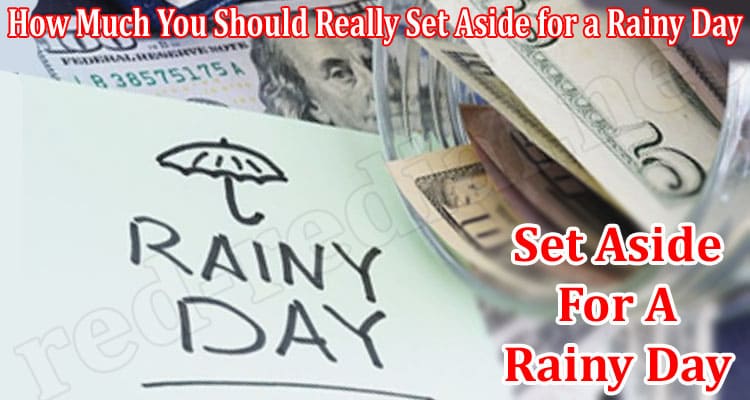How Much You Should Really Set Aside for a Rainy Day
How Much You Should Really Set Aside for a Rainy Day: No one can predict the future. But the best thing to do is to accept that you will always encounter unexpected events, hence the need to prepare for them adequately. A sudden job loss, medical expenses, or big house or car repair can hurt your financial health and throw you off the truck. However, dedicated savings and some preparations can go a long way.
Rainy Day Funds
A rainy day fund is meant for small unanticipated expenses such as home maintenance, buying new tires, paying for home appliance repair, or packing tickets. When setting up your rainy day fund, ensure you decide how much you need.
Think about some of your unexpected expenditures. Do you have kids who may need braces? Do you have an aging dog that may need some extra care? Do you live in an area prone to hurricanes or tornadoes? Keep all the above into consideration when deciding how much to set aside.
You can keep your rainy day fund in an account that you can access easily. The recommended amount of money to set aside for rainy days is between $500-$2000, but this amount can vary based on individual needs.
You need to factor the rainy day fund into your overall budget. Set up an automatic debit monthly so you don’t fall behind on your saving goals. Keep your rainy day fund liquid where you can access the funds without paying the penalty.
Emergency Funds
Emergency funds, on the other hand, is money set aside to pay for significant unexpected expenses such as major car fixes, unemployment, home appliance replacement and repair, and unforeseen medical costs.
Emergency funds can keep you afloat in a time of need without relying on high-interest loans or credit cards. An emergency fund is also instrumental when you already have debt, preventing you from borrowing more money.
Start small by saving about $500 and work your way up to half a year’s worth of your expenses. The right amount of what you need to keep for an emergency is also determined by financial circumstances.
But the best way is to ensure that an emergency fund can at least cover three to six months of your expenses. You can save up for an emergency in a savings account with a high-interest rate and easy access and should be separate from the funds you use daily.
How Much to Save for a Rainy Day?
As earlier discussed, saving for a rainy day fund should be between $500 to $2500 based on your lifestyle. Saving for the rainy days can help you prove that you can achieve your financial goal, even using credit cards for people with bad credit. But you could be asking yourself whether to focus on saving or paying off the debt first; well, saving and paying off debts is counterintuitive, but saving is the best place to start.
While you save for your rainy days, continue making payments to protect your credit score. Save up to $500, after which you can start putting aside any excess money for your monthly debt. You can also decide how much more you can afford each month based on extra cash that remains in your account once all your essentials are covered.
How to Actually Save
Saving some extra cash seems like a great idea till you have to set up an actionable plan to achieve it. We understand that money can be tight, and finding ways to squeeze some extra cash to save may seem impossible.
Start by focusing on what is necessary, like groceries versus the nice-to-have things, to uncover other saving sources. It might not be fun stopping yourself from buying trending shoes in favor of repairing your current pair, but it is all worth it.
The second step should be creating that emergency account. Figure out how much you can set aside and push yourself to achieve it. Use an automatic transfer method to transfer 5% of your paycheck to the emergency account, and if you feel like saving is making your life a little unbearable, you can adjust.
Continue saving even at a lower rate, and as the amount builds up in your rainy day account, you’ll be inspired even to do more in the future.
Rainy Days Saving Versus Sinking Funds
Sinking funds are the larger scale of the rainy day funds for more considerable expenses. A sinking fund is also meant for unexpected costs, including weddings and saving up for Christmas and the amount you need for the sinking fund depends on the estimated cost of the expense.
You can also organize for sinking funds by splitting expenses into categories in line with your objectives, and the goal is to gain greater control over your finances.




